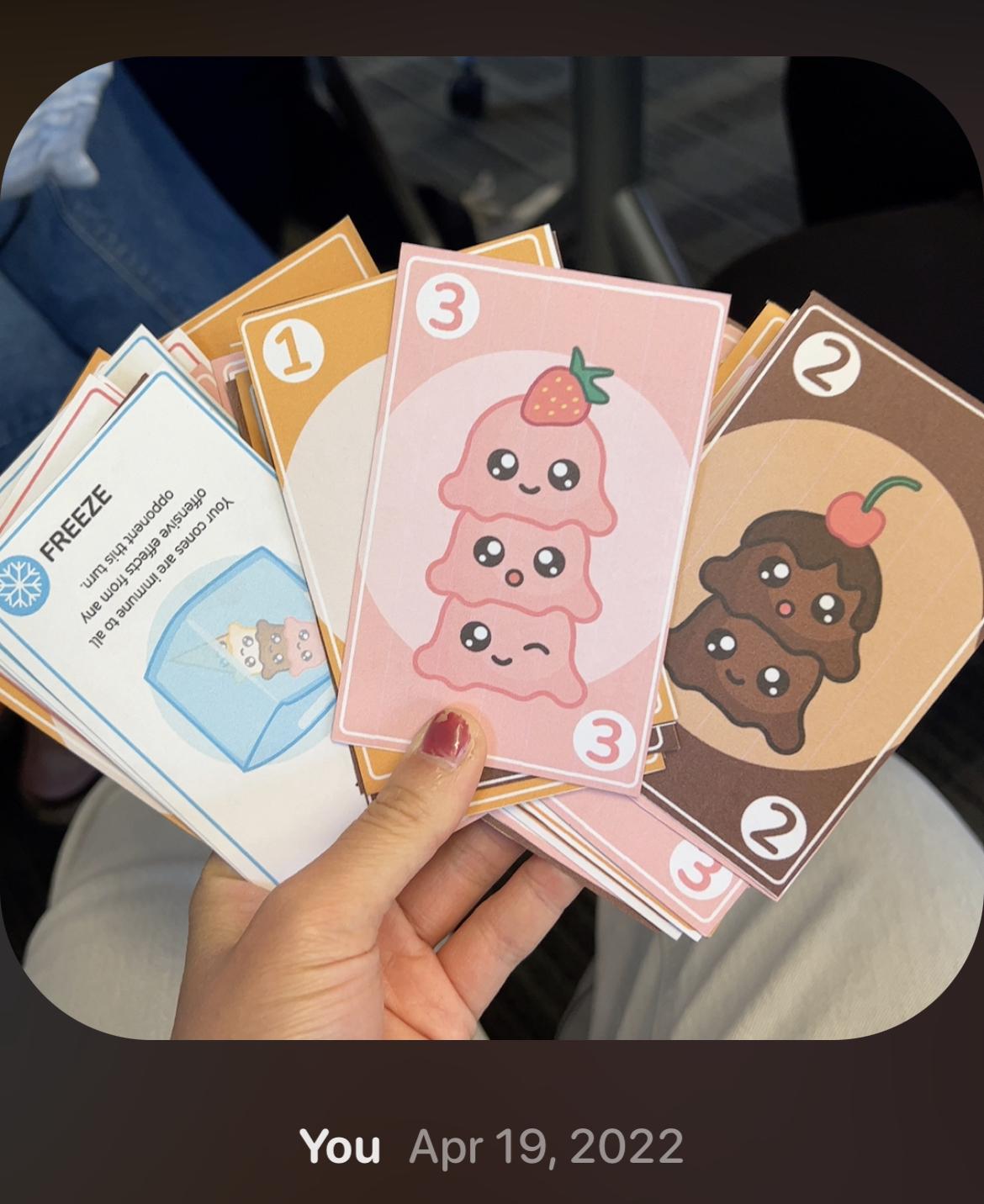Ironically, it wasn’t games that made me sign up for this class. Rather, it was my interest in consumer social. Before this class, I was building social apps and it was hard to make them “sticky” (a term to describe a product with enough value that people would come back). Various mentors and people I talked to for advice encouraged me to study game design because consumer-facing product design benefits more from the lines of thinking that game designers have which are focused on creating joy rather than, for example, measuring how much a pain is solved. After hearing strong positive comments from my friends who’ve previously gone through CS247G, I was very excited to dive in. And I was not disappointed. I learned more than I could have expected going in.
First, I learned the things I hoped to learn, the ideas that helped shape my consumer product design skills. For example, knowing that there are different kinds of “fun” and how to design for them, the game development theory of mechanics-dynamics-aesthetics and how these 3 fundamental elements all go together, and the importance of rigorous playtesting and iterating which I got good practice with through this class. When learning about the different kinds of “fun”, something that changed my mind was learning about the submissive type of fun, the kind of fun where we just need to shut off our brain for a bit and relax. I know this feeling, but I never acknowledged it as something worthy of studying. I used to brush off apps that serve this type of fun because I didn’t have the vocabulary to describe what utility they were creating. Now, I realize that these apps should not be dismissed. The 8 types of fun each provide different values and feelings which are all valid, including those where we want to zone out of reality for a bit.
A personal challenge that I don’t believe was unique to me was sketchnotes. Before this class, I identified myself as a person who loved thinking about, analyzing, and seeing design. I did not think of myself as a designer or artist, no matter how much I hoped to be one. Truthfully I didn’t think I could get there, which is what made sketchnotes an arduous weekly task where I confronted these insecurities. The first sketchnote was an absolute struggle–I couldn’t fit it on one page, the colors did not go well together, and I erased and erased my drawings until finally giving in to the easy way out by using emojis. However, this journey has a positive ending. Each week, I felt less pressure to make it perfect. With the second sketchnote (after I started using stick figures because of the drawing lesson we learned in class), I thought to myself, “Huh, this isn’t so bad.” That was the turning point in shifting my mentality towards my artwork because I learned “I can do this.” Each week after that, I had more courage and fun towards my sketchnotes. After the fifth sketchnote, I sent pictures of all my sketchnotes to my family and even they were surprised. The creativity I was able to cultivate through my sketchnotes is something I am very grateful for and hope to continue growing. In fact, I’ve begun sketchnoting articles/podcasts/talks I consume in my personal time (like the sketchnotes below on Brene Brown’s TED Talk and John Doerr’s podcast episode).
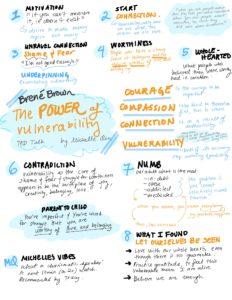
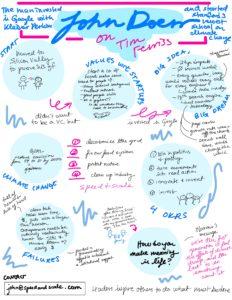
.
Another valuable perspective shift I had in this class was understanding how much innovation exists in game development. I was constantly blown away not just by how vast and extensive the game ecosystem is, but the deep amount of expertise that lies in each game. Most of the tech I’ve interacted with showcases a strength in either technical skill, original artistry, or the concept behind the idea, but a great game combines all three. An example that comes to mind is Goragoa. To me, this is the peak of innovation: where skill meets creativity. It was truly awesome to get exposed to so much innovation by studying games.
Finally, one of the best learnings I had in this class came from the first lecture: learning about the fundamental meaning of play. The simple idea that human beings need to play was eye-opening for me. This not only affected my attitude towards designing games and tech, but also my own experiences as a student. I developed a relationship with this class where I genuinely looked forward to coming to lecture and came in with joy and feeling safe, the same feelings as if I was going into a relaxing weekend. Sometimes, it feels like learning cannot be simultaneously serious and joyful. This class was a clear counterexample to that. I was engaged and learned a lot in every lecture, and that is in great thanks to Christina and the teaching team for creating this environment. I also deeply enjoyed and learned a lot in every project meeting I had with my teammates who I was fortunate to work with: Amy, Kyle, Jin-Hee, and Sam. What a joy it was to meet and work with you all–I will never look at ice cream, space, and delivery systems the same again!
From the first project, Scooped:
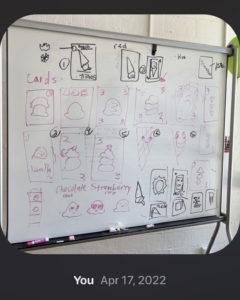
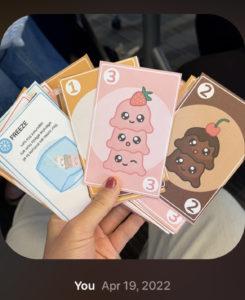
From the second project, SpaceMail:
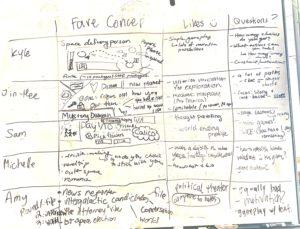
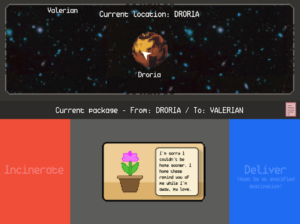
Going forth, I’m excited to not only design for play but continue to notice, study, and appreciate the beauty of play. I also have accumulated a long list of games to play from this class (like Unpacking and Florence) which are waiting for me… summer can’t come soon enough!


